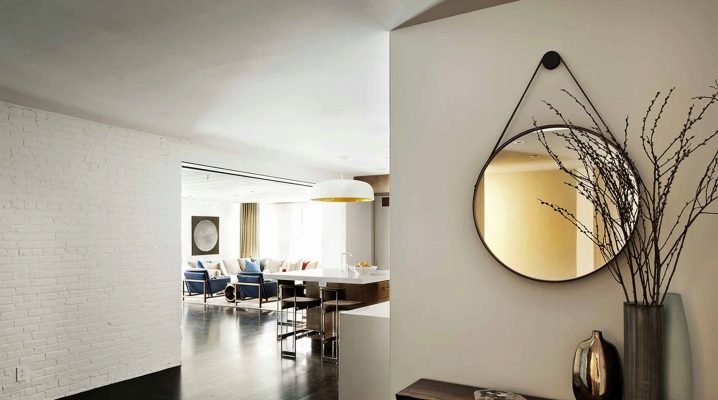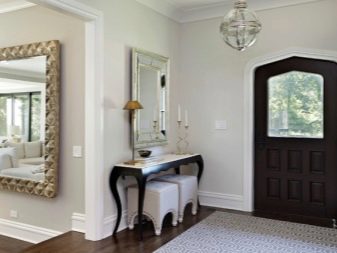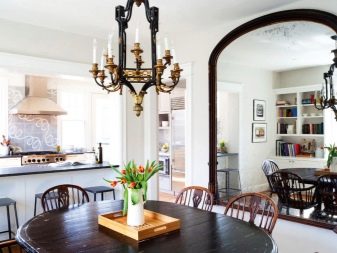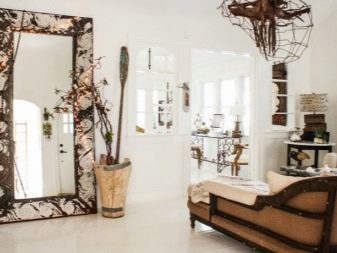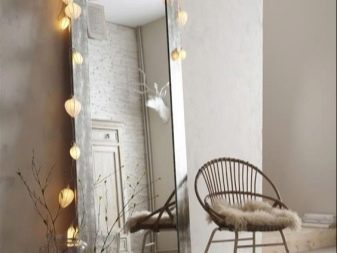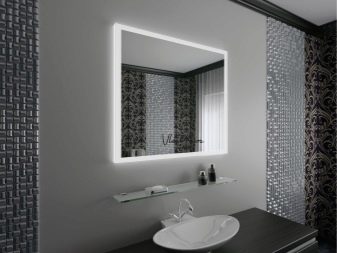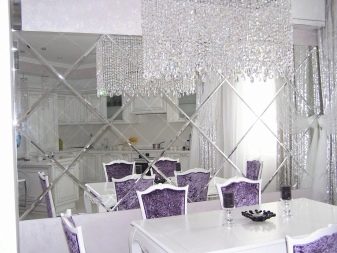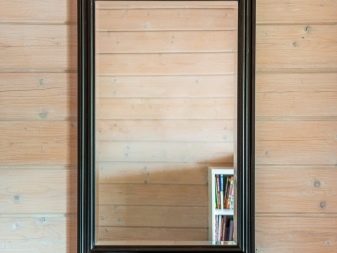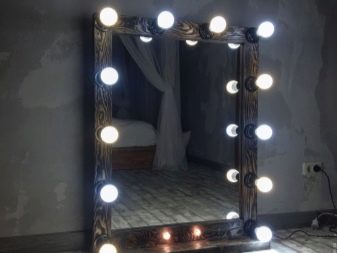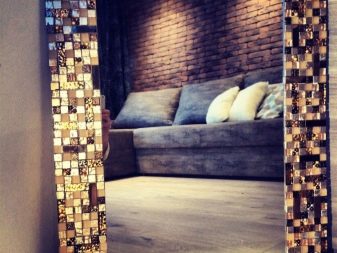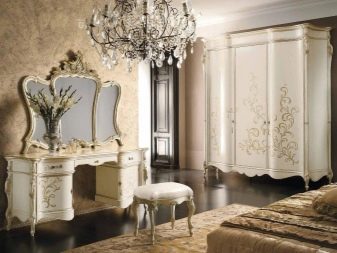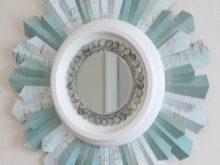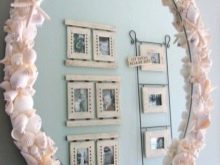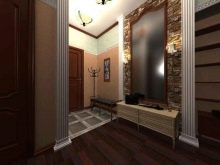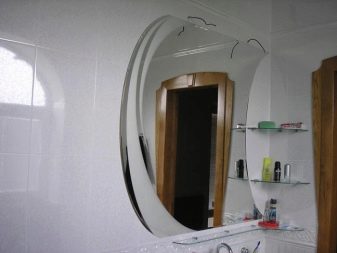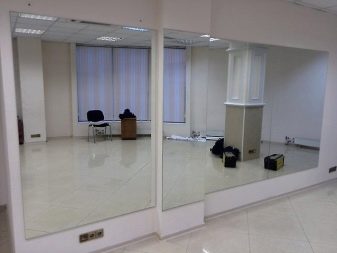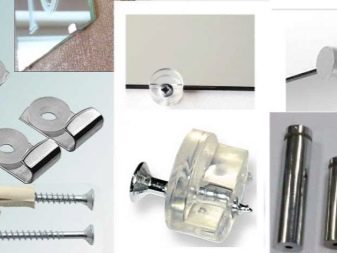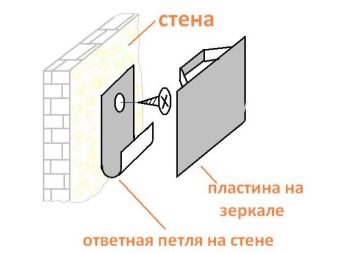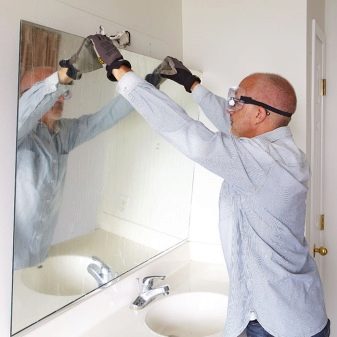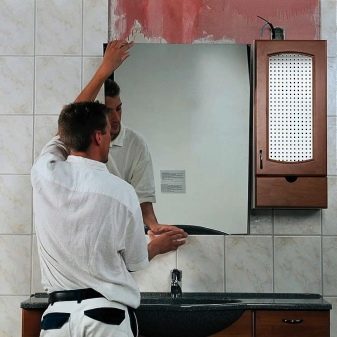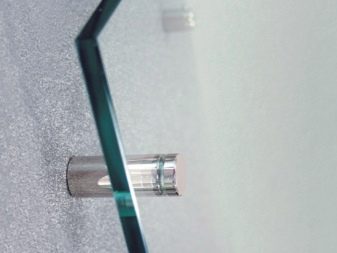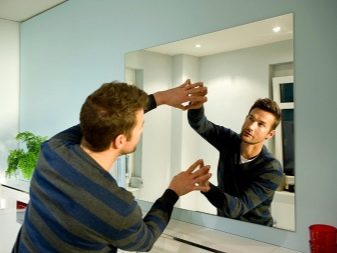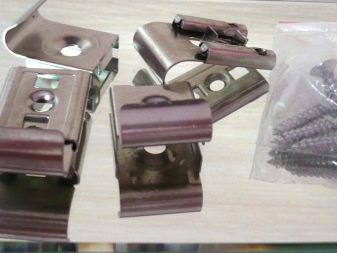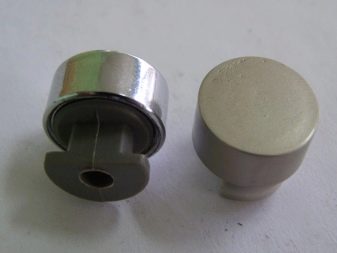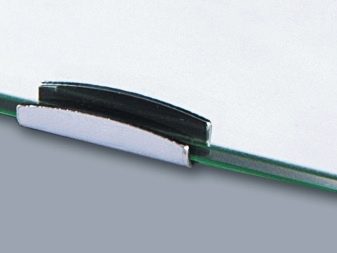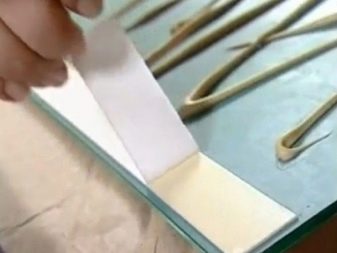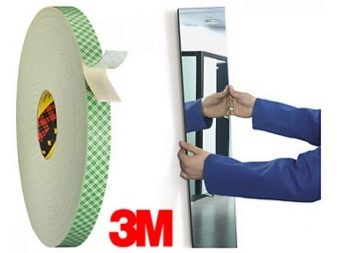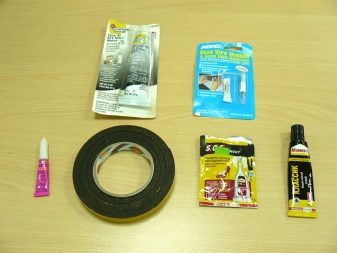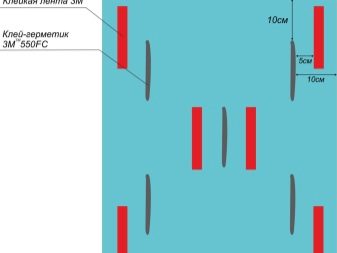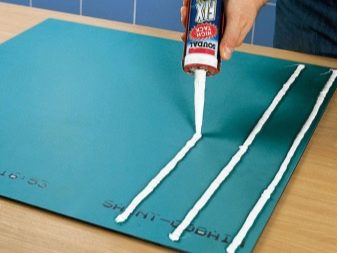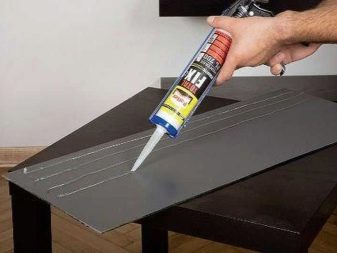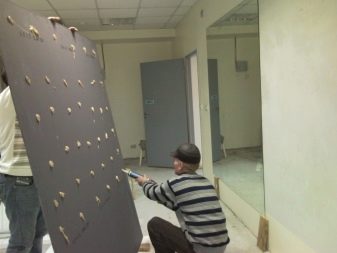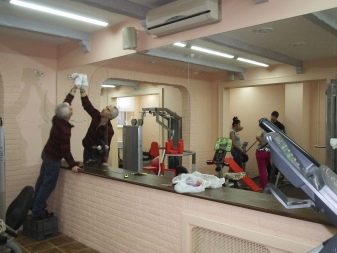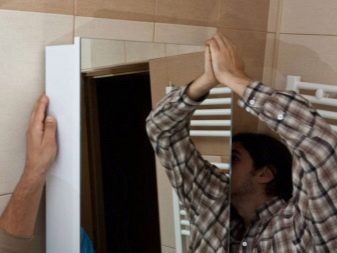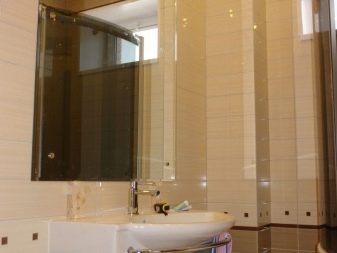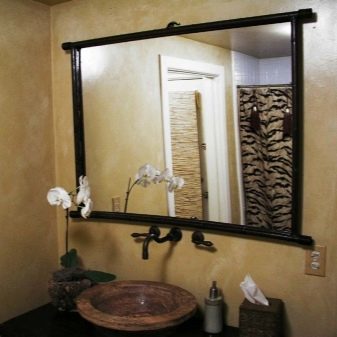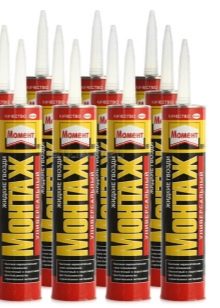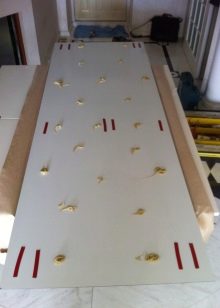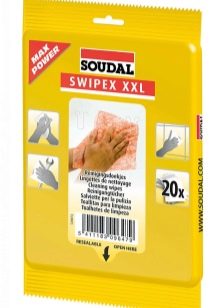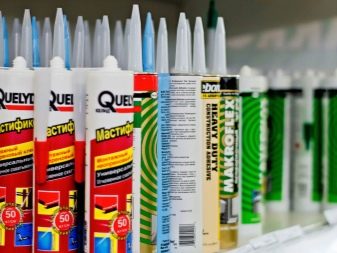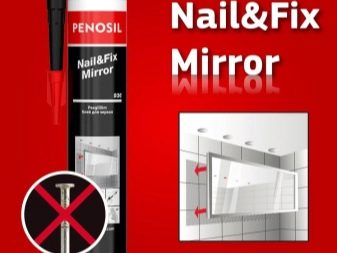Ways to mount the mirror on the wall
The mirror is an integral part of any dwelling. Archaeologists have noted that some kind of glass was already in prehistoric times. And the first real mirrors appeared in France in the XVI century. Since then, every apartment and every house has a mirrored surface.
Where and how to hang a mirror so that it looks appropriate and beautifully complements the interior, will be discussed in this article.
Kinds
First you need to know what the reflective surface hangs for.
In this case, you need to pay attention to the main points:
- direct sunlight should fall on the canvas;
- the best place for large mirrors is the entrance hall;
- if the canvas has a frame, then it must be in the same style as the whole room;
- the mirror should hang absolutely straight;
- it is necessary to abandon mirrors where there is not enough light.
There are many types of mirrors. Here are the main ones:
- Functional. Used for its intended purpose. Most often hangs in the bathroom, hallway or at the dressing table;
- Decorative. Decorate either the wall or the whole room. Can hang on the wall between the paintings, can be hidden as a panel, decorated with paintings. You can also find a variant with the design of a decorative mirror in the form of a window frame with four or five identical glasses;
- As part of the decoration of the premises. Glass can serve as a substitute for tiles or panels. Now mirror tiles are coming into fashion. Even a partial decoration of such tiles will look prestigious. And the whole walls or ceilings will make a tremendous impression;
- With additional feature. Any mirrors may have additional devices for convenience. For example, lighting is often embedded in canvases. Or for the decoration of rooms in the mirror can be mounted clockwork.
Mirrors also differ in the characteristic elements of the decor:
- Aged. Such mirrors are also called patinated. The effect of antiquity is created with the help of special chemical compounds. These canvases will fit perfectly into styles such as French or eclectic. Gray or brown spots will take you to another era;
- Facet. A feature of such mirrors are beveled edges. They can be found in all types of interiors. Such canvases are usually extremely heavy, because only thick and massive mirrors are used to perform chamfering work;
- Colored. Most often used tinted glass, rarely cause amalgam of different colors. Suitable for all areas of minimalism;
- With patterns. Ornaments or drawings on the canvas will decorate any room.
It is also necessary to remember that mirrors come in different forms:
- Round or oval. Such cloths ideally fit into any interior;
- Rectangular. It does not fit all styles and designs. Usually has impressive dimensions. Often divided into two and the result is a corner rectangular mirror;
- Other forms. Now manufacturers make canvases of the most diverse and unusual forms.It can be both silhouettes, and abstract substances, various symbols.
What can I attach?
You can attach a mirror to any surface.
The main thing is to know what means to use for this, and from what material the wall was lined during the repair.
On the holder
On the wall, which is already tiled, tile can be mounted only with the help of dowel-nails, called holders.
The fastening system itself consists of four components:
- Plastic sleeve. It will be crammed into the wall and expand when the screw is tightened;
- Metal screw itself;
- Clamping detail. It performs two functions - fixes the glass most tightly to the wall, also has a thread for fixing the decorative part;
- A plug is a part that closes the screw itself against moisture. Also has a décor function.
Such an attachment option is difficult for independent execution. It requires drilling holes in the canvas itself, which is often extremely difficult to do on your own. Therefore, it is better to contact the specialists, determining in advance where and what holes are needed, so that during installation there will be no unexpected difficulties.
This is followed by installation.You need to attach the glass exactly as it will hang. Mark the holes on the wall.
Follow with a drill and a special nozzle to make a hole of sufficient depth so that the glass does not tear the fastening system out of the wall.
After that, liners are inserted into the holes. Then screws are screwed in with the mirror. Then you will need a presser and decorative stubs. After work it is necessary to check whether the screws will withstand the load. To do this, shake the canvas slightly. If the dowels remained in place, the installation is correct.
On profile
This method is used when it is necessary to hang a heavy mirror on drywall. For this process you need a metal profile, screws and dowel butterflies.
The most important thing when fixing a mirror on drywall is to find a metal profile under it. After it is found, the profile itself must be fastened to it with the help of screws or “butterflies”. After that, you can install additional brackets. For added strength, you can determine the location of profiles over the entire wall, make holes in the mirror and profile and fix it additionally.Such a system will allow to withstand the canvas height in human growth.
On accessories
There is a huge number of different accessories for mounting mirrors:
- brackets to support the fabric from the bottom and side;
- suspension of glass for hooks with the help of two self-tapping screws and thread using guides;
- brackets;
- clamps;
- canopies and corners.
The algorithm for performing work for all of the above types of fittings is almost the same. The first step will be marking - it is necessary to determine exactly where the canvas will be and where the fasteners will be. It is necessary to count two fasteners from the bottom, because they will be the maximum load. But there may be three or even more, because the heavier the mirror, the greater the number of mounts should be. They are also calculated on the sides and corners.
Following at the marked points holes are made with a drill. The hole diameter must be identical with the holes of the fasteners. The hardware is screwed into these holes, and then the web is inserted into each holder.
At the end it is necessary to put on decorative elements or simple caps.
Ways without drilling
Often double-sided tape is used to fix the mirrors on the wall.
There are undeniable advantages:
- easy disassembly;
- possibility of use on porous surfaces;
- low cost;
- Scotch tape is not subject to mechanical influences at amplitudes of humidity and temperature.
For installation, you need to choose only proven and high-quality adhesive tape. The cost of a special tape for this purpose is higher, but with it the process of dismantling will be successful.
Otherwise, when using cheap tape can be such developments:
- Scotch will not sustain the weight of the canvas, and it will crawl or fall sharply and break;
- problems removing tape from the wall or from the back of the mirror.
You also need to remember that you can not use adhesive tape when installing the fabric on the tile.
However, one of the easiest and fastest methods to fix a mirror on a wall is a method without drilling - only using glue. Such glue is called liquid nails, and the choice of such glue must be approached responsibly. Only proven glue will withstand the load of a heavy mirror.
Bonding technology
The whole process of mounting a mirror with glue can be divided into several main stages:
- need to prepare a place to install glass. It must be cleaned and degreased with alcohol;
- when installing on a wall of concrete, it is imperative to perform a primer on the walls;
- if the place of the mirror has already pasted wallpaper, then it is desirable to remove them, otherwise the mirror may fall and tear off the wallpaper. You can also fix a piece of plywood in that place to the wall and glue the mirror onto it;
- it is necessary to note the place where the mirror will hang;
- Prepare props, profile and liquid nails. The props and profile will help keep the mirror level until the glue hardens;
- liquid nails must be applied either dotted at the same distance from each other, or by vertical stripes at a distance of 10-15 cm from each other;
- when the mirror will lean against the wall, you will need to lightly press it for a while. After put the props and remove them after a couple of days;
- after removing the props, take a look at whether there is a target between the wall and the mirror. If it is available, be sure to use sealant.
Installation Tips
Although the process of installing a mirror on a wall can not be called complex, and it can be done with your own hands, you must take into account some points when working with a mirror:
- when drilling it is necessary to constantly cool the mirror in the place of drilling. Otherwise it may crack or burst with heat;
- it is necessary to drill only with a diamond-coated drill; ordinary drills will chop up the fabric and the hole will be inaccurate;
- finished holes must be cleaned or covered with sandpaper for processing edges;
- drill holes, first under the lower fasteners, later - under the side and top;
- it is best to mount the mirror with a hardware with a butterfly device to the drywall;
- instead of liquid nails, you can glue the mirror on a neutral silicone sealant. In terms of cost and setting time, they are about the same, but acid sealants will damage the web. Therefore, it is necessary to carefully study the scope of use of each adhesive and sealant.
It is also necessary to take into account such features as:
- room humidity;
- the presence or absence of a frame in the mirror;
- dimensions, thickness and weight of the web;
- wall material in the room;
- the permissibility of drilling walls or linen.
Brands
Most often for gluing mirrors using special mirror adhesives. They do not damage the coating. A wide choice of such compositions is presented in the Leroy Merlin chain of stores. For example:
- Instant Liquid Nails. Suitable for most types of surfaces. Made of synthetic rubber, remains elastic and does not harden over time;
- Soudal 47A. Consists of synthetic rubber. The advantages include a short period of hardening and excellent adhesive ability;
- Tytan. Consists of rubber and various pitches. Suitable for mounting on porous and uneven surfaces;
- Penosil Mirror Fix. The foundation - synthetic rubber. Can be used for gluing on a large number of surfaces. It has a beige color. Drying time is about 20 minutes.
How to install a mirror with your own hands, see in the video.
